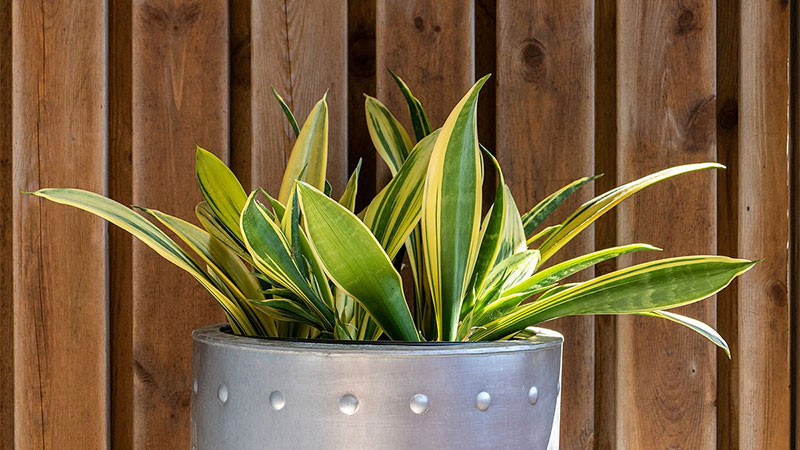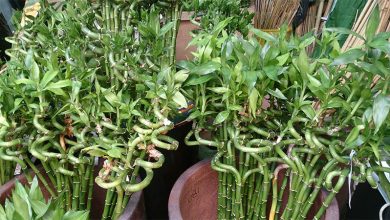Types of Indoor Plants with Names for Your Home

Discover the many types of indoor plants with names that can brighten your home, improve air quality, and create a calming atmosphere. From low-maintenance Aloe Vera to air-purifying Peace Lilies, there’s a plant for every room and lifestyle.
Check our full list of indoor air purifying plants for care tips, or explore the best indoor plants for beginners for easy-to-care-for options you can get delivered today. Find the perfect indoor plants for your bedroom, living room, or office today!
Indoor plants aren’t just decorative—they improve air quality, reduce stress, and make your home feel more alive. This guide introduces the main types of indoor plants with names and provides examples for each category, helping you choose the perfect plants for your space.

🔹 Types of Indoor Plants with Names
1. Succulents
-
Overview: Drought-tolerant, store water in leaves, low-maintenance.
-
Examples: Aloe Vera, Echeveria, Jade Plant
-
Benefits: Air purification, easy care, suitable for sunny windowsills.
2. Flowering Indoor Plants
-
Overview: Adds color and elegance, some purify the air.
-
Examples: Peace Lily, Anthurium, African Violet
-
Benefits: Aesthetic appeal, mood enhancement, indoor air cleaning.
3. Foliage/Leafy Plants
-
Overview: Focus on lush green leaves, thrive in indirect light.
-
Examples: Rubber Plant, Philodendron, Fiddle Leaf Fig
-
Benefits: Improves air quality, adds natural décor, boosts productivity.
For more ideas on lush, large-leaved plants, see our Indoor Tropical Plants With Large Leaves guide.
4. Palms
-
Overview: Adds a tropical feel, effective humidifiers.
-
Examples: Bamboo Palm, Areca Palm, Kentia Palm
-
Benefits: Air purification, humidity regulation, visually striking.
5. Vines & Climbers
-
Overview: Trailing plants, ideal for shelves or hanging baskets.
-
Examples: Pothos, English Ivy
-
Benefits: Easy to grow indoors, removes toxins, adds dimension to rooms.
6. Air-Purifying Specialists
-
Overview: Focused on removing indoor pollutants.
-
Examples: Snake Plant, Spider Plant, Boston Fern
-
Benefits: Improves oxygen, reduces allergens, perfect for bedrooms.

🔹 Benefits of Indoor Plants by Type
-
Air Purification: Succulents, Snake Plants, and Peace Lilies remove toxins like formaldehyde and benzene.
-
Low Maintenance: Succulents, ZZ Plant, and Pothos are easy for beginners.
-
Mood and Productivity: Flowering and leafy plants boost well-being and focus.
-
Humidity Control: Palms and Boston Ferns release moisture into the air.
-
Pet-Friendly Options: Spider Plant, Boston Fern, and Aloe Vera are safe for animals.
| Plant Type | Examples | Key Benefits | Notes / Tips |
|---|---|---|---|
| Succulents | Aloe Vera, Echeveria, Jade Plant | Air purification, low maintenance | Ideal for sunny windowsills, beginner-friendly |
| Flowering Indoor Plants | Peace Lily, Anthurium, African Violet | Mood enhancement, aesthetic appeal, indoor air cleaning | Some need more light and regular watering |
| Foliage / Leafy Plants | Rubber Plant, Philodendron, Fiddle Leaf Fig | Improves air quality, boosts productivity, adds natural décor | Thrives in indirect light, can grow large |
| Palms | Bamboo Palm, Areca Palm, Kentia Palm | Air purification, humidity control, tropical aesthetic | Indirect light preferred, water when topsoil is dry |
| Vines & Climbers | Pothos, English Ivy | Easy to grow, removes toxins, adds dimension | Can be trained on shelves or hanging baskets |
| Air-Purifying Specialists | Snake Plant, Spider Plant, Boston Fern | Improves oxygen, reduces allergens, ideal for bedrooms | Low-maintenance options for beginners |
| Pet-Friendly Options | Spider Plant, Boston Fern, Aloe Vera | Safe for animals, adds greenery | Great for homes with pets, low toxicity |
🔹 Bedroom-Friendly Plants
Some plants thrive in bedrooms, offering clean air and tranquility:
-
Snake Plant: Releases oxygen at night, improves sleep.
-
Lavender: Reduces stress, promotes relaxation.
-
Aloe Vera: Easy-care succulent that purifies air.
-
Spider Plant: Low-maintenance, safe for pets.
Tips: Avoid overwatering and flowering plants that release pollen if sensitive.
Need plants for low-light rooms? See Indoor Plants That Need Zero Sunlight for easy-care options.

🔹 Plants to Avoid in Bedrooms
-
Cacti: Require bright sunlight, can be hazardous indoors.
-
Oleander / Dieffenbachia: Toxic to pets and children.
-
Fiddle Leaf Fig / Bird of Paradise: Need lots of light and space.
-
Rubber Plant / Poinsettia: Can grow too large, some are toxic.
Stick to low-light, air-purifying, and pet-safe options like Snake Plants and Peace Lilies.
For tips on growing Snake Plants in low-light areas, check Snake Plant in Bathroom Without Window.
🔹 Conclusion
Understanding the types of indoor plants with names helps you select the right ones for your lifestyle and space. From succulents and leafy plants to flowering beauties and air-purifying specialists, each plant type offers unique benefits.
Start your indoor garden today—whether it’s a beginner-friendly succulent or an elegant Peace Lily—and enjoy a healthier, greener, and more serene home.
What houseplants are good for indoors?
Top indoor plants include Snake Plant, Peace Lily, Pothos, ZZ Plant, and Aloe Vera. Choose based on light, space, and whether you need pet-safe options.
Are succulents good indoor plants?
Absolutely! Succulents like Aloe Vera and Jade Plant are low-maintenance, drought-tolerant, and perfect for sunny spots. They also help clean the air and add natural beauty.
Can indoor plants improve air quality?
Yes! Plants like Snake Plants, Peace Lilies, and Spider Plants remove indoor toxins and release oxygen. They also help maintain humidity, making your home healthier and fresher.
What houseplants are good for indoors?
Top indoor plants include Snake Plant, Peace Lily, Pothos, ZZ Plant, and Aloe Vera. Choose based on light, space, and whether you need pet-safe options.
Are succulents good indoor plants?
Absolutely! Succulents like Aloe Vera and Jade Plant are low-maintenance, drought-tolerant, and perfect for sunny spots. They also help clean the air and add natural beauty.
Can indoor plants improve air quality?
Yes! Plants like Snake Plants, Peace Lilies, and Spider Plants remove indoor toxins and release oxygen. They also help maintain humidity, making your home healthier and fresher.

















